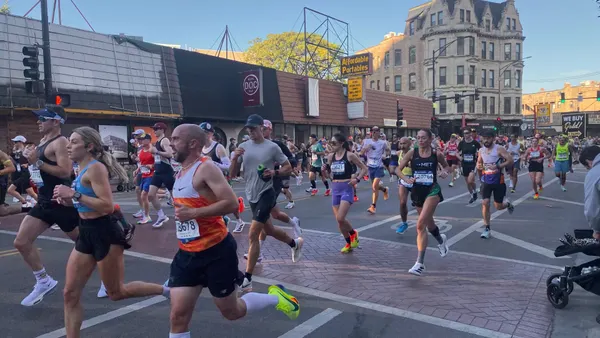Dive Brief:
- From May last year to May of this year, traffic to neimanmarcus.com rose 17.9%, during a time when Sears’ website traffic dropped 28.8%, jcpenney.com fell 23.6%, kohls.com fell 13.9% and macys.com, saksfifthavenue.com and bloomingdales.com were stable, according to digital market intelligence firm SimilarWeb.
- In that period, the site’s direct traffic improved more than 50% with "relative stability, if not minor increases, across other channels," according to the report. From March to May of 2017, neimanmarcus.com was bidding on a little over 4,500 keywords, but in the same period this year, that number rose above 6,500.
- Nearly half of Neiman’s focus is on branded terms like "neiman marcus" or "neiman." In March to May 2016, non-branded terms made up 25% of its paid search traffic. In the same period this year, non-branded keywords, many of them luxury terms like "gucci," made up 56% of the brand’s paid traffic, SimilarWeb found.
Dive Insight:
In October, Neiman Marcus unveiled a turnaround plan pinned on what it's calling a "Digital First" strategy, which executives then said will include style services and involve highly personalized interactions based on personal preferences, past purchases and search data.
SimilarWeb has apparently uncovered some of the results of that shift, which SimilarWeb Communications Manager Lena Young noted in a blog post on Wednesday include marked improvements for a department store hardly known for its online prowess.
"[O]ne of the biggest challenges for mid-range department stores to overcome is figuring out how to target users effectively with such a wide range of goods," she wrote. "For neimanmarcus.com, the luxury perspective has simplified this process, enabling them to channel traffic from keywords that are already identified with premium products. By utilizing this strategy Neiman Marcus has made an effective move to own their brand awareness online while simultaneously improving their digital luxury presence."
The slow progress online for luxury brands is a reflection of a wariness in that segment of losing control of their brand image outside of their well-appointed, thoughtfully staffed brick-and-mortar walls, according to Chris Paradysz, CEO of PMX Agency. "It comes down to the fear of losing the cachet," he told Retail Dive. "But when a brand carries over the intimate relationship, and the emotion over to the digital world, there’s a tremendous opportunity. It’s a game changer, and it’s been a game changer for brands who are doing it well."
It remains to be seen whether it can be a game changer for Neiman Marcus, which has struggled mightily under a significant debt burden for years now. There have been signs of new life in its last two quarterly reports; earlier this month the company reported that third-quarter comparable sales rose 6% and total revenue increased 4.8% to $1.17 billion, the third straight quarter of year-over-year revenue increases.
Unfortunately for the company, its interest expenses increased as well — to about $ 77.7 million — and remain higher than its operating profit. Neiman has taken painful steps to return to profitability, including cutting 225 jobs last July and scaling back its off-price footprint by about 25% to focus on its position as a luxury seller
In addition to driving traffic online, the department store is working to drive traffic to stores and catch the eye of younger consumers. That includes the recent launch of the "Idea Factory", which features, among other attractions, customization of apparel and accessories with one-of-a-kind artwork and services like tattoo inking and body piercings that are out-of-the-box for its upscale, even stuffy image.














